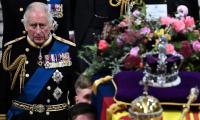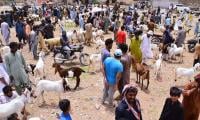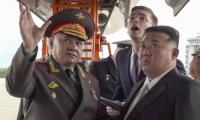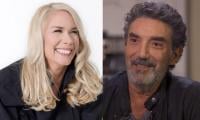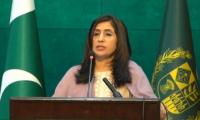An excessive focus on specialization in the various disciplines within science and engineering has purportedly hindered scientific progress in Pakistan.
In this op-ed we are not even scratching the surface of a highly insulated iron curtain between the exact and the social sciences, between humanities and business studies or the wide chasms between our mainstream educational institutions and madressahs. We are only looking at the schisms within science education itself and how these barriers stultify creativity and innovation.
Fences within our science education systems are deep rooted and remind us of our propensity to court mediocrity and the perceived notion of the glory of ‘specialization’. For example, a distinction between matriculation in science or in the arts bifurcates our body of students into two distinct pools.
Subsequently, the FSc stream further trifurcates into the archaic divisions of pre-engineering, pre-medicine and computer science. These distinctions render biological, physical, computational and mathematical sciences as distinct entities. Hence a pre-medical student cannot study mathematics and appreciate its ubiquitous reach in all walks of life, while a pre-engineering student cannot decipher the wonders of the biological world and will remain aloof to the most notable advances revolving around the human genome, the proteome or the metabolome.
It is seen that many engineering disciplines are now infused with science. The photon now competes with the electron as the lifeline of devices; and a physicist is capable of bridging this gap between electronics and photonics. Batteries are revolutionizing global energy demands; a chemist helps understand these power banks. Understanding complex systems ranging from human societies to human consciousness, and global climatic patterns to the spread and control of disease necessitates an intermixing of ideas from various fields. Any modern engineering curriculum should aim to nurture these interdisciplinary skills.
A few days ago, the Higher Education Commission (HEC) floated the idea that admission to a PhD programme does not require an undergraduate degree in the same discipline. Under the revised scheme, a microbiology student, for example, goes directly into a mathematics programme and carries out research in systems biology, enabling her to view biochemical systems as dynamical spatiotemporal networks. This proposal has met severe resistance.
Ironically, one of the authors of this piece (Sabieh) is an engineer from Pakistan’s oldest engineering university but could not get admission into a physics programme in the same institution. Eventually, he made his way to a foreign university without any paper-based evidence of formal training in physics.
Subsequently, his hiring into a public university here was next to impossible due to the arcane hiring criteria. Consider geology, astronomy, oceanography, climatology, archeology, bio-engineering which draw upon multiple streams of thought. These areas remain neglected in Pakistan, and their growth can be deemed stunted, because we haven’t been able to rise above the math-chemistry-physics-biology divide and the traditional boxes of engineering.
The strong barriers within science disciplines lead to observing interesting patterns in the country’s academic community, so while organic chemistry flourishes in the country, the area of physical chemistry is relatively weak since chemists pursuing traditional botany, zoology and chemistry combos in their BSc or the four-year undergraduate chemistry programmes find little opportunity to interact with mathematically minded chemists or chemically trained physicists. Similarly, clinicians have no recourse to statistical tools for analyzing epidemiological data or even data generated on the workbench. Just analyze the hundreds of MPhil theses coming out of medical universities each year for their demonstrated skills in quantitative reasoning.
In order to understand how modern scientific intellectual thought is progressing, and to which our higher education must be attuned to, a brief story of the evolution of modern biology would be interesting. Evolving from butterfly-collection and classification of the flora and fauna, the DNA-centered dogma of biology was established, thanks to the physicist Fancis Crick, and led to the mapping of complete human genome. Eric Lander, a trained mathematician was one of the pioneers of cracking the human genome.
The postmodern picture of biology that has now emerged in the post-genomic world is a highly complex, interconnected system which cannot be deciphered without the sharp chisel of quantitative, analytic and numerical techniques. There are several exceptions proving the rule. Let’s celebrate them. Engineering students are welcome into Masters and Phd programmes in basic sciences in LUMS; an electrical engineering department can hire a chemical engineer versed in microfluidics, a physics department can open its arms for an electrical engineer who broods over fundamental principles of how blackholes form, and accomplished computer scientists and statisticians are surrounded by molecular biologists in the Department of Biology. Engineering students also flock to this university for relishing their first love in basic sciences, which has been denied by the straight-jacketed diversion of our best students into engineering and medicine.
Similarly, COMSATS University’s Interdisciplinary Research Centre in Biomedical Materials has a team of more than 25 chemists, physicists, pharmacists, engineers, materials scientists and dentists who converge for creating artificial skin, bone and other forms of human tissue. The Panjwani Centre for Molecular Medicine and Drug Design is a confluence of clinicians, pharmacologists, chemists, life scientists and neuroscientists.
In short, we need to create an atmosphere of academic freedom and flexible rules inside our universities, but the process really needs to begin from bottom up. Introducing an honours stream in grades eleven and twelve allowing a student to take multiple subjects from disparate bins is essential, thus breaking away from the beaten tracks of pre-engineering and pre-medical.
We indeed have a long way to go before we can even begin to break the divide between the science and the arts, between exactitude and complexity, and the secular and the sacred; but let’s start with breaking the obvious barriers in science education itself.
Sabieh Anwar is an experimental physicist and dean at the Syed Babar Ali School of Science and Engineering at LUMS.
Naveed Iftikhar is an entrepreneur, teacher and economic/urban policy professional.
People stand in line up as election officials check their ballot papers during voting general election at a polling...
Women show their voter identity cards as they stand in a queue before casting their votes in Agartala. — PTIThe 18th...
Former prime minister Imran Khan. — Instagram/ imrankhan.ptiAn old saying has it that “when you dance with the...
Kashmiris in Indian illegally occupied Kashmir protesting against the Indian occupation as the forces of India looked...
A representational image showing residents walking at a wholesale market in Karachi. — AFP/FileOnce again there is...
A representational image showing late Pakistani human rights activist and Supreme Court lawyer Asma Jahangir. —...

